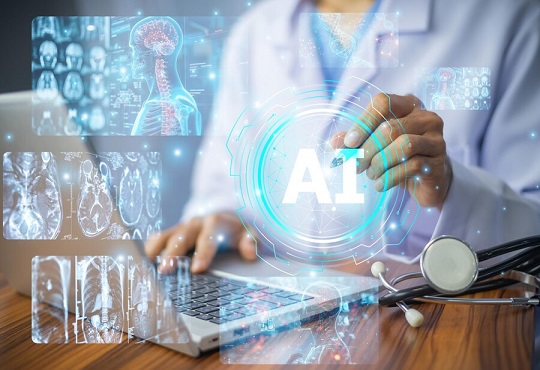NASA, Google Build AI Medical Assistant for Deep-Space Missions
CIOTech Outlook Team | Monday, 11 August 2025, 06:43 IST

- Google-NASA AI tool aids space medical diagnosis with 88% accuracy in ankle injury tests.
- CMO-DA uses real-time data for predictive health analytics in isolated space environments.
- Future expansions include microgravity effects detection, benefiting remote Earth healthcare too.
Google and NASA are collaborating on an AI-powered medical assistant for extended space missions, beginning with the Artemis program to return to the Moon. Known as the Crew Medical Officer Digital Assistant (CMO-DA), this proof-of-concept tool helps astronauts diagnose and treat symptoms in situations where no doctor is onboard or communication with Earth is delayed.
Powered by Google AI and trained on spaceflight literature, the CMO-DA supports crew medical officers or flight surgeons in maintaining astronaut health. It delivers real-time analysis of crew health and performance, facilitating data-driven medical decisions and predictive analytics.
The AI testing includes simulated scenarios and it is assessed with the help of the same clinical framework used to evaluate medical students. In preliminary tests, it had a good performance with 88 percent ankle injury diagnostic accuracy 80 percent ear pain diagnostic accuracy and 74 percent flank pain diagnostic accuracy.
“Early results showed promise for reliable diagnoses based on reported symptoms,” the blog reads. “Google and NASA are now collaborating with medical doctors to test and refine the model, aiming to enhance autonomous crew health and performance during future space exploration missions.”
The initiative operates under a fixed contract with Google Public Sector, encompassing cloud computing, infrastructure for app development, and model training. NASA retains ownership of the application's source code and will contribute to finalizing the models. Vertex AI enables access to Google models alongside third-party options.
Also Read: SAP Inaugurates Second-Largest R&D Hub in Bengaluru, India
NASA intends to progressively enhance the system's features. Upcoming versions will integrate real-time data from onboard medical devices and identify health issues unique to spaceflight, such as microgravity's impact on the body.
NASA and Google are collaborating with doctors to narrow down the model, the purpose of which is to develop autonomous medical care in missions to the Moon, Mars, and other planets. The technology can as well advance delivery of healthcare on the distant areas of the earth.
This marks AI integration for NASA. Earlier this year, the Jet Propulsion Laboratory successfully tested Dynamic Targeting, an AI system enabling Earth-observing satellites to autonomously select imaging targets in less than 90 seconds, without human input. Developed over a decade, it emulates human interpretation of imagery.



.jpg)
